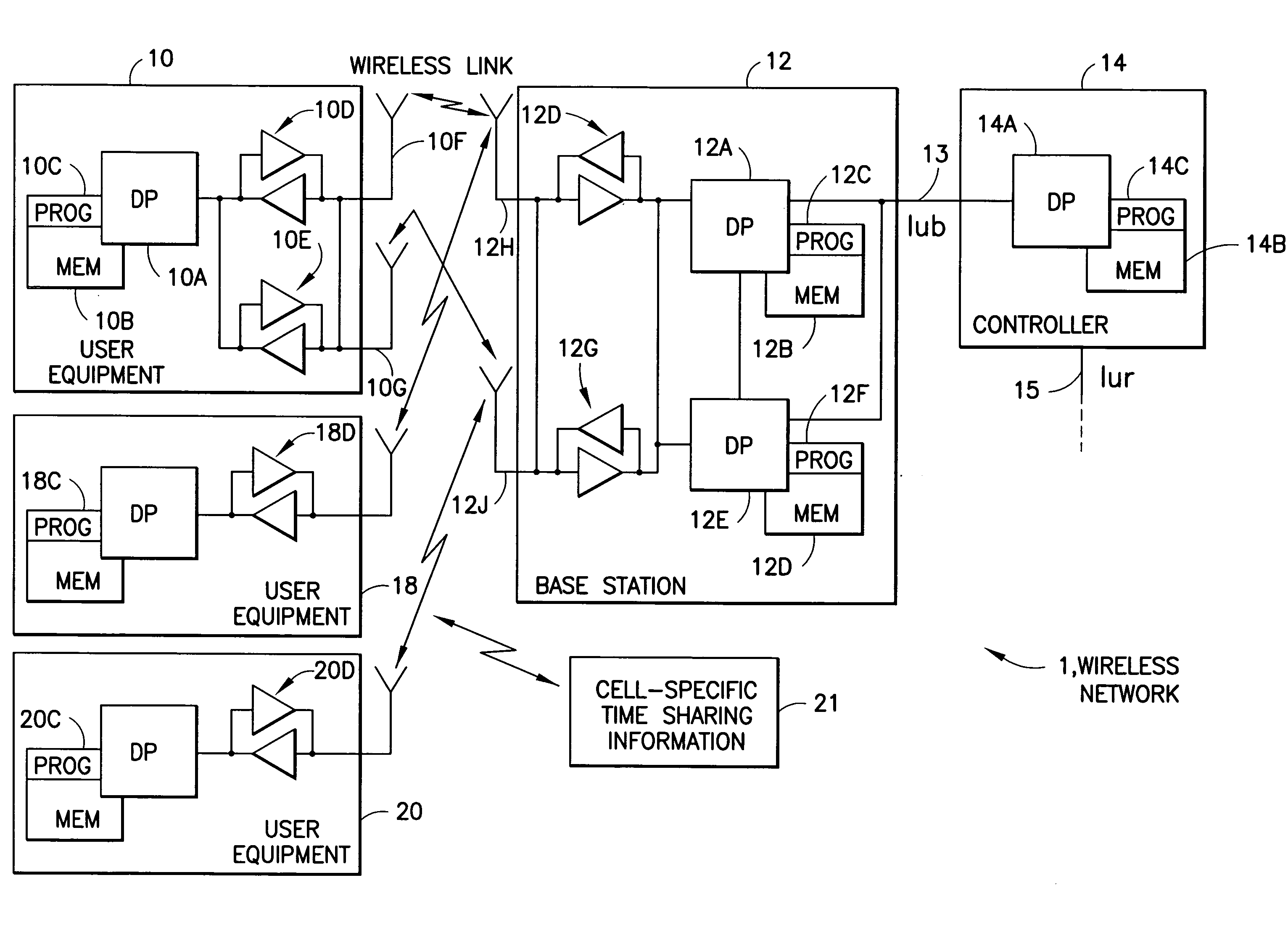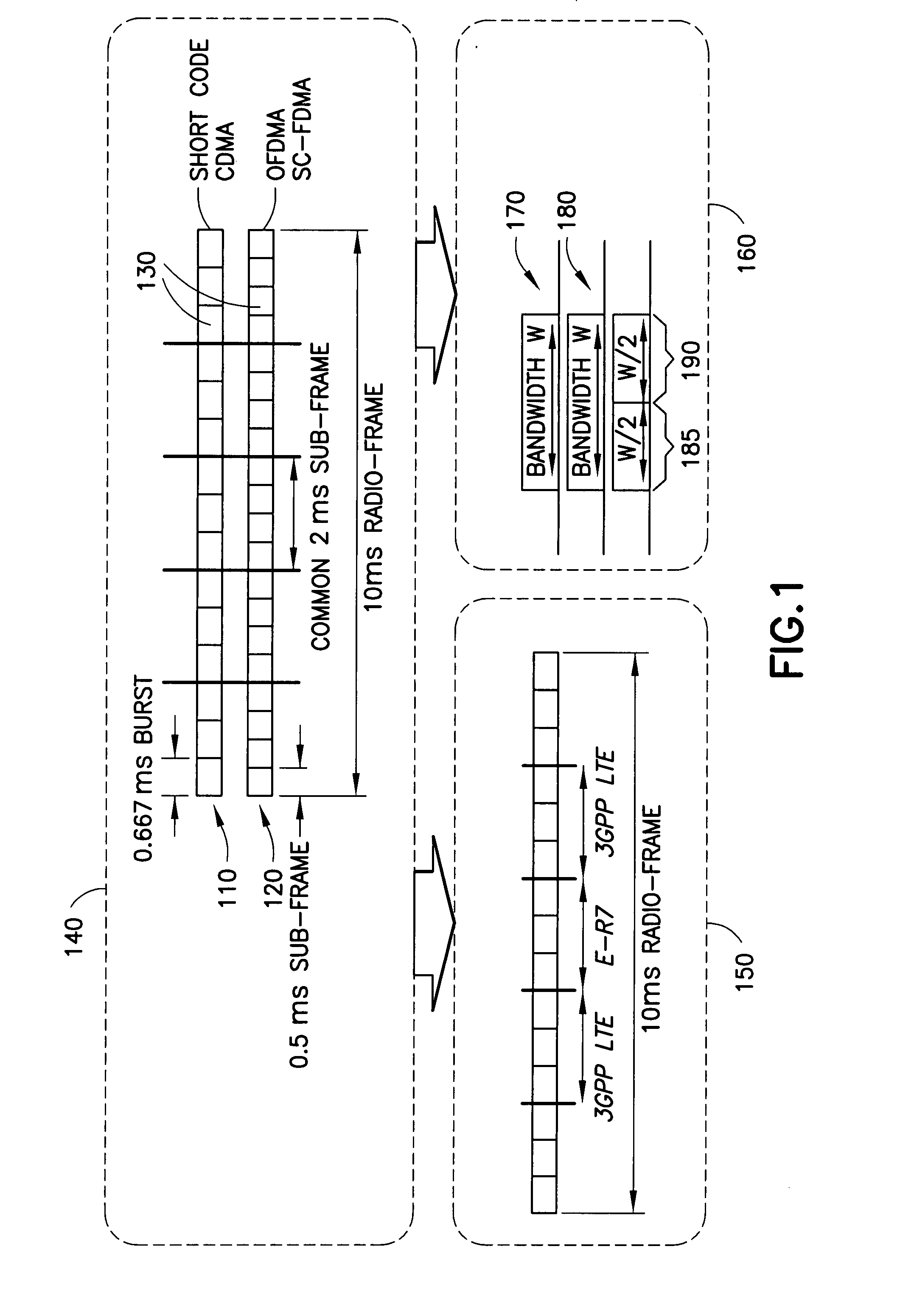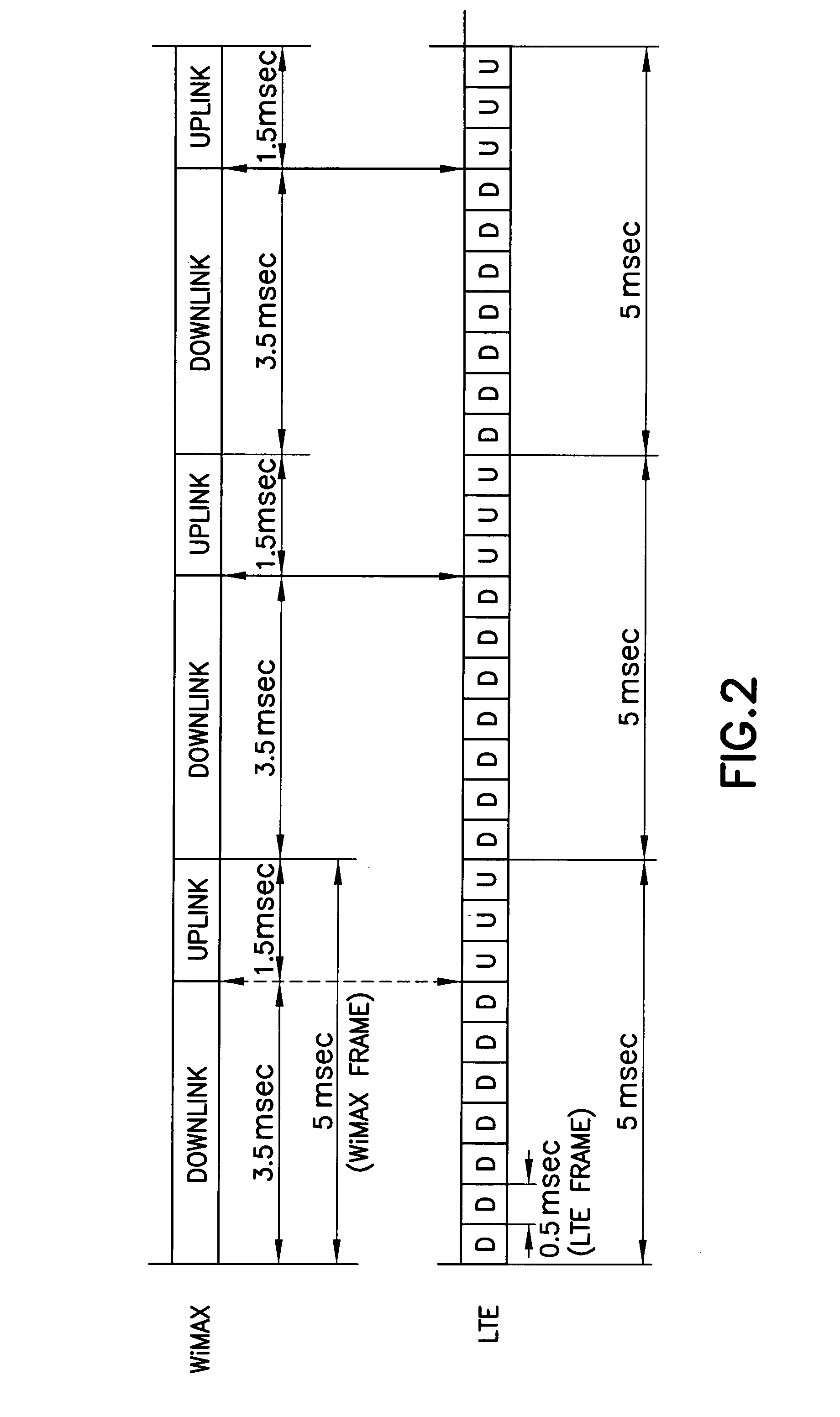Flexible radio resource sharing in time and frequency domains among TDD communication systems
a radio resource and communication system technology, applied in the field of wireless networks, can solve the problem of uniform resource usage of existing systems across the network
- Summary
- Abstract
- Description
- Claims
- Application Information
AI Technical Summary
Benefits of technology
Problems solved by technology
Method used
Image
Examples
Embodiment Construction
[0032]As previously described, it can be problematic when a new TDD system is introduced into a wireless network that already contains another TDD system. On the other hand, the principle of allowing coexistence of TDD systems in time and frequency domains is well known, and this is commonly understood as one of the inherent flexibilities of a TDD system. For example, IPWireless has promoted coexistence of LTE-TDD and HCR-TDD, and companies have promoted the coexistence of LTE-TDD with Wimax.
[0033]For instance, FIG. 1 is a diagram of compatible frame structure for time-division CDMA (TD-CDMA) and LTE. Reference 140 shows common frame structure for the radio frame 110 for TD-CDMA (called “E-R7”) and for the radio frame 120 for LTE. Both radio frames 110, 120 have 10 ms frames, with 2 ms sub-frames. Each 2 ms sub-frame accommodates 2 times 1 ms LTE bursts (e.g., or possible 4 times 0.5 ms bursts), or 3 times 0.667 ms TD-CDMA bursts. Reference 130 is used to indicate that both TD-CDMA ...
PUM
 Login to View More
Login to View More Abstract
Description
Claims
Application Information
 Login to View More
Login to View More - R&D
- Intellectual Property
- Life Sciences
- Materials
- Tech Scout
- Unparalleled Data Quality
- Higher Quality Content
- 60% Fewer Hallucinations
Browse by: Latest US Patents, China's latest patents, Technical Efficacy Thesaurus, Application Domain, Technology Topic, Popular Technical Reports.
© 2025 PatSnap. All rights reserved.Legal|Privacy policy|Modern Slavery Act Transparency Statement|Sitemap|About US| Contact US: help@patsnap.com



